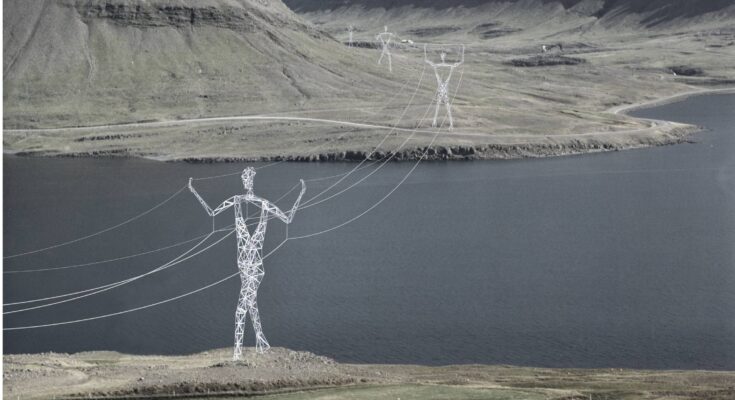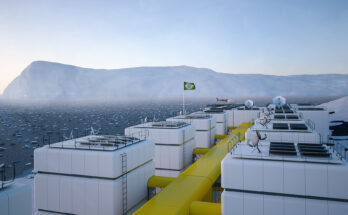In the windswept, dramatic landscapes of Iceland, where nature and design often intertwine in breathtaking harmony, a group of architects proposed a vision that blends infrastructure with artistry in a way the world has never seen. Dubbed the “Land of Giants,” this imaginative concept rethinks the humble electrical pylon—not as an industrial necessity, but as a monumental work of public art.
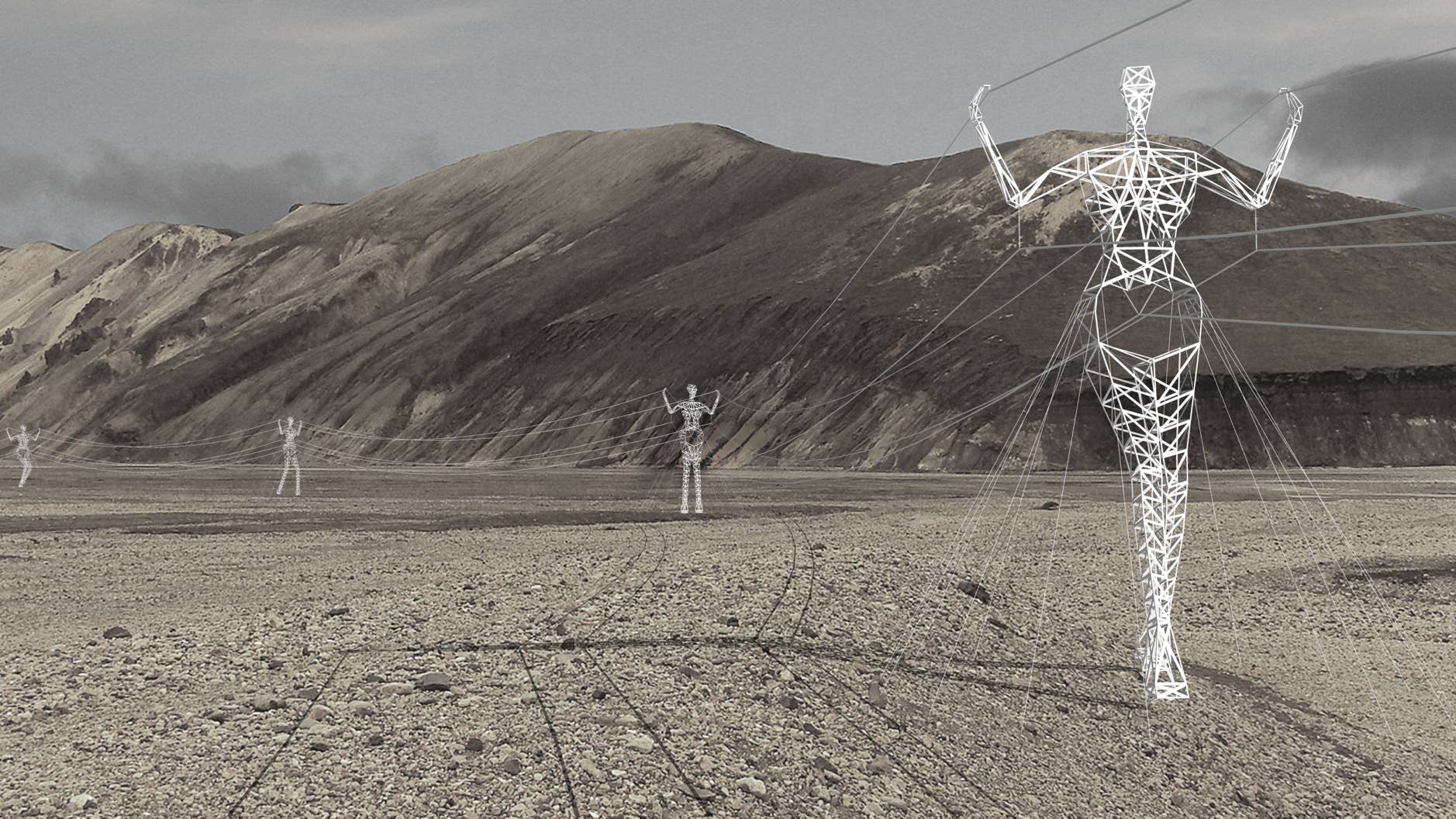
The idea was conceived by Choi + Shine Architects, an innovative design studio based in Boston, for a 2008 competition held by Landsnet, Iceland’s national energy company. Their proposal was nothing short of visionary: transform standard high-voltage electrical pylons into giant human-shaped sculptures, striding or kneeling across the Icelandic terrain. These figures would maintain the full functionality of power transmission lines while introducing a powerful new visual narrative to the landscape.
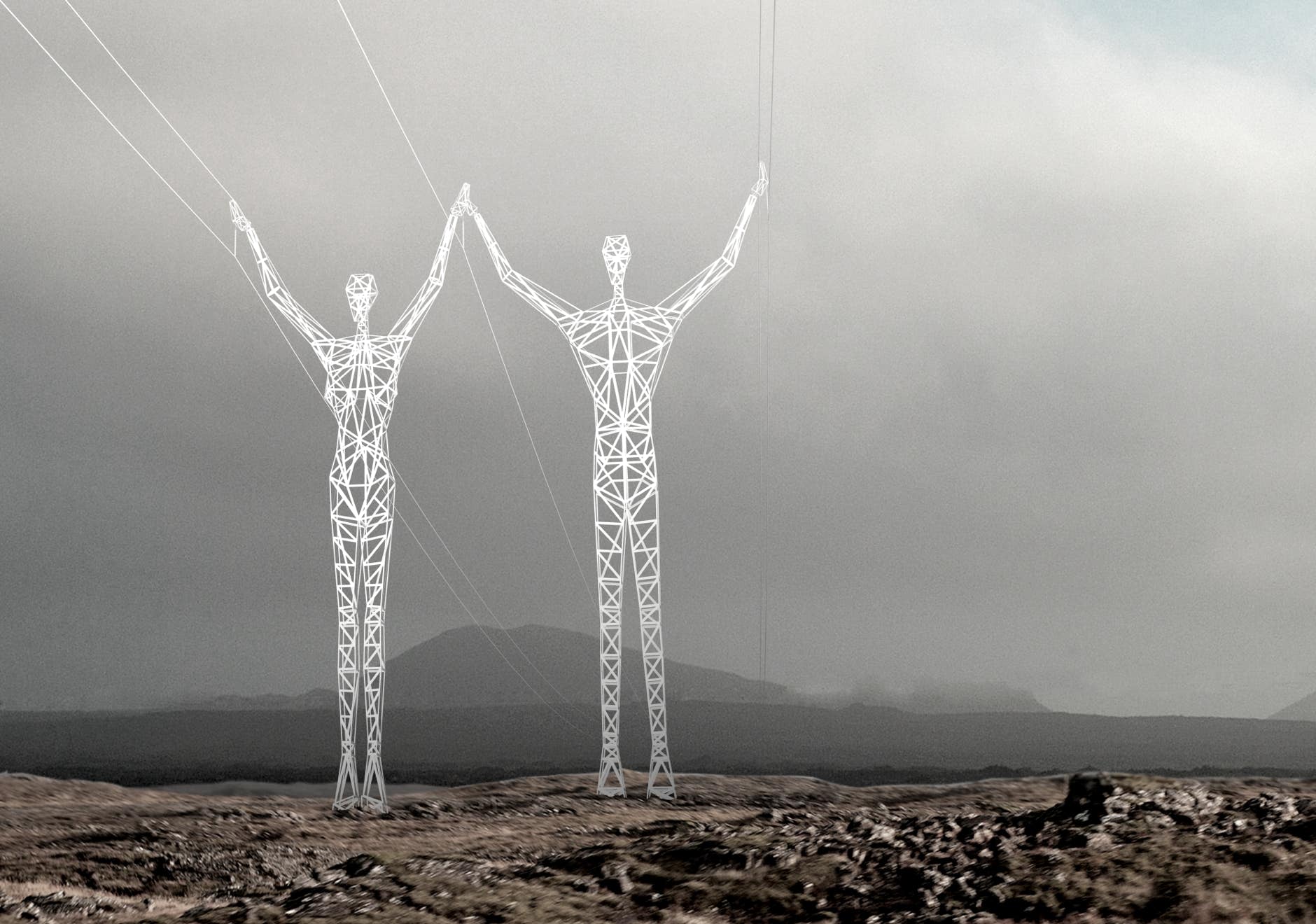
Each “giant” would be made of steel frameworks and reinforced concrete, carefully engineered to match the structural integrity of traditional pylons. However, unlike typical pylons, which are often seen as eyesores, these human figures would appear to walk, climb, or gesture across the land, echoing the ancient sagas and mythic imagery deeply rooted in Icelandic culture.

The project envisions a series of these towering figures, some up to 45 meters (150 feet) tall, spaced along power line routes. By modifying the limbs, posture, and positioning of each structure, the architects created a sense of movement and personality. One sculpture might appear to march resolutely over a hill, while another might hunch under the weight of the power lines, lending both whimsy and gravitas to the otherwise utilitarian structures.
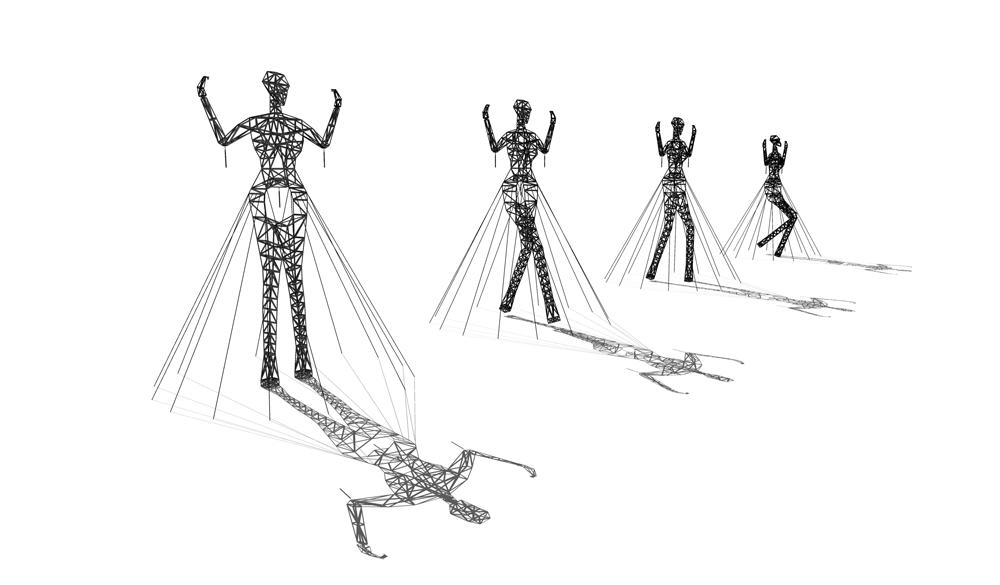
What makes the “Land of Giants” especially captivating is how it blurs the lines between infrastructure, art, and national identity. Iceland is known for its stark, cinematic landscapes—fields of lava, glaciers, geysers, and fjords—where modern structures can often feel intrusive. But the Giants aim to integrate with, and even pay tribute to, the environment. Their forms evoke the legendary Jötnar (giants) of Norse mythology, who roamed the Earth in tales passed down for generations. In this way, the pylons are not just functional—they become storytellers, guardians, and symbols of national heritage.
Though the “Land of Giants” remains a conceptual proposal, it has sparked widespread international interest and admiration. The project has been exhibited in design and architecture forums around the world and is often cited as a prime example of how creativity can reimagine essential infrastructure. It poses a fundamental question: why must the things we build for utility be ugly, when they could also inspire?
From an engineering standpoint, the Giants would be modular, allowing for economical construction and adaptability across different terrains. Their design doesn’t require radically new technology—just a bold shift in thinking. By combining structural practicality with aesthetic purpose, the project demonstrates how art and engineering can work hand in hand to enhance public space.
In an era where cities and countries are increasingly seeking to balance progress with environmental and cultural preservation, projects like “Land of Giants” point the way forward. They show that functionality need not come at the cost of beauty, and that even the most mundane aspects of our built environment—like power lines—can become opportunities for expression and identity.
While Iceland has yet to bring these giants to life, the proposal remains a powerful reminder of what is possible when imagination is allowed to roam freely. If ever constructed, the “Land of Giants” would stand not just as pylons—but as icons of human creativity, towering across the land like modern mythological sentinels, connecting not just electricity, but people, stories, and place.
